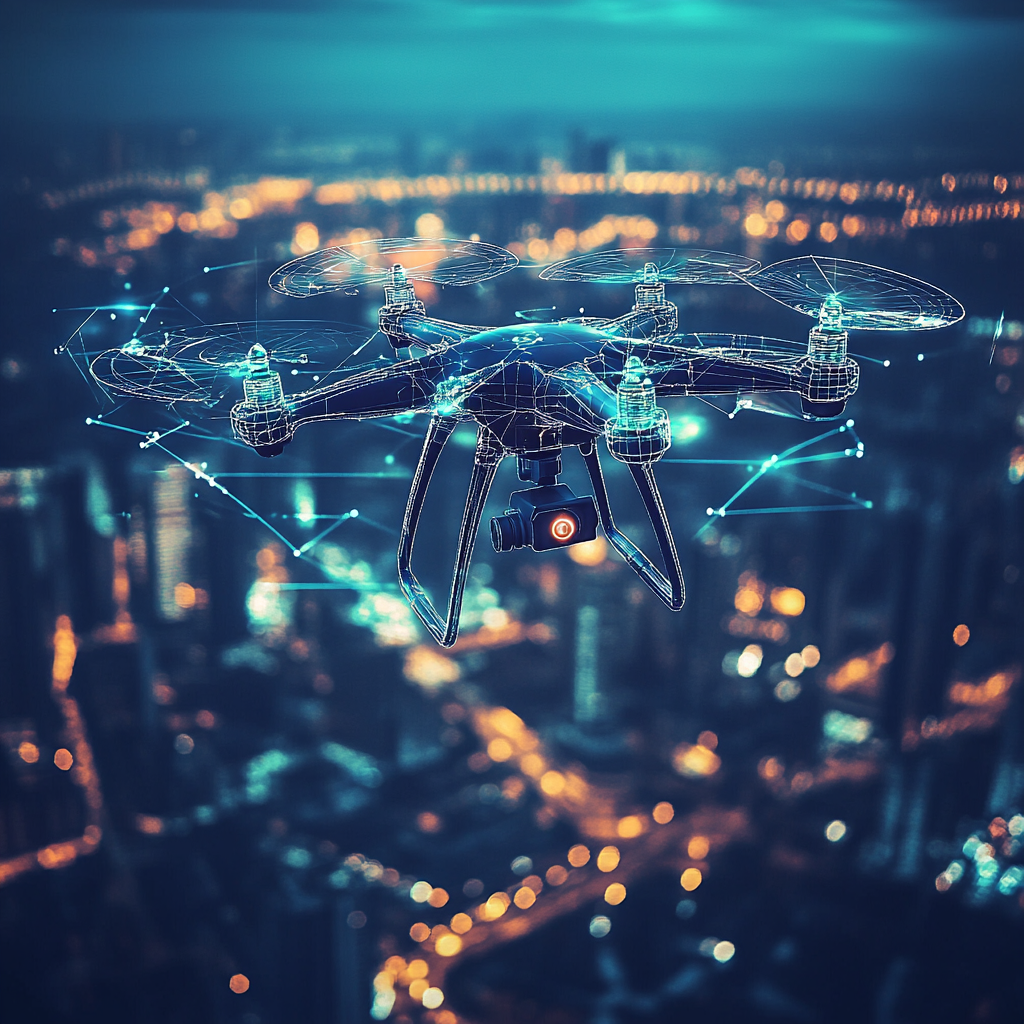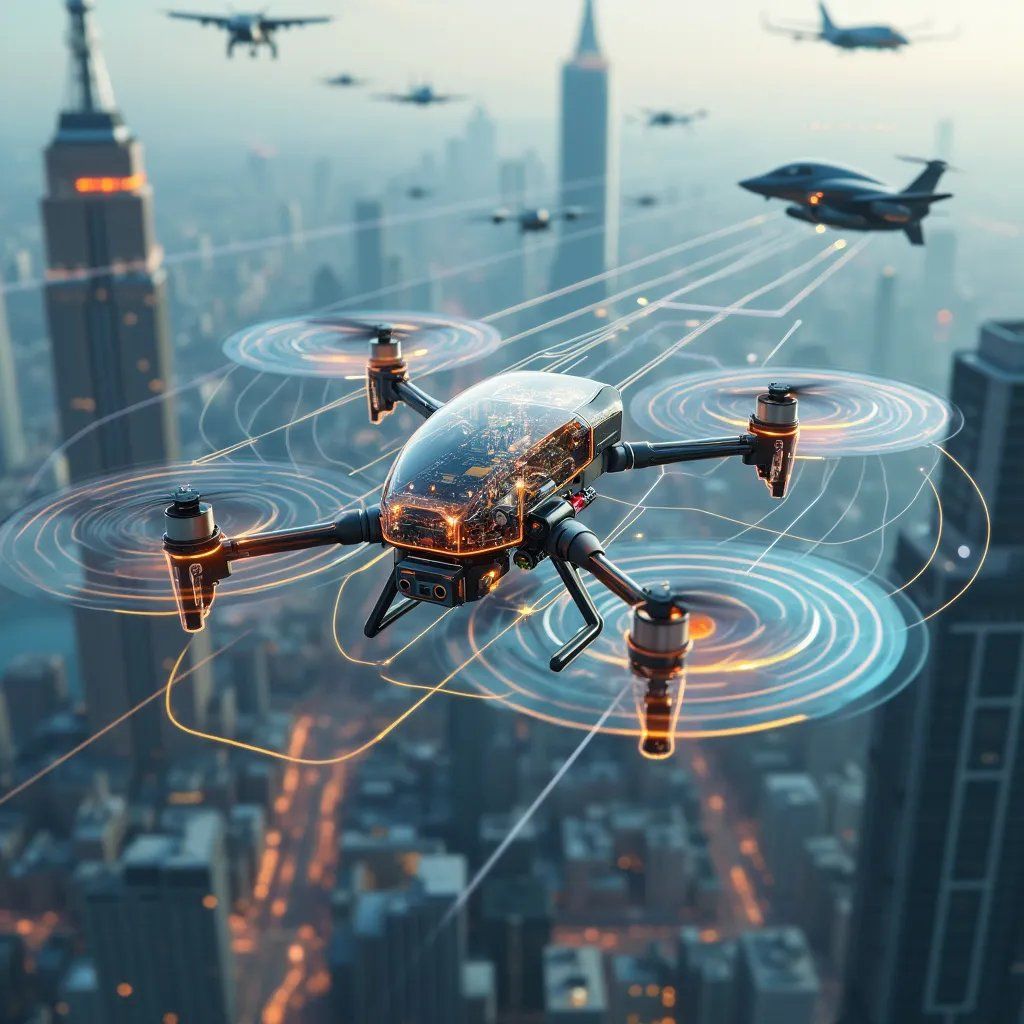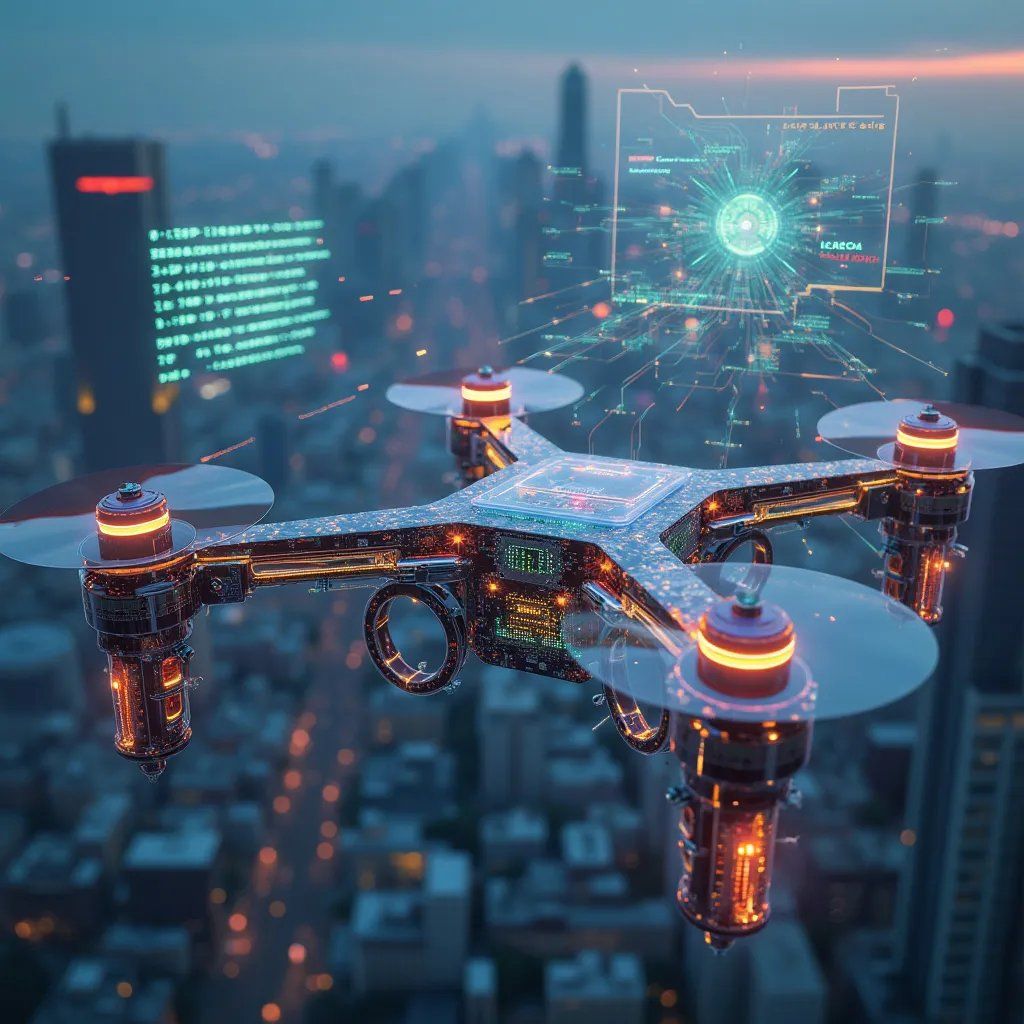As the unmanned aerial system (UAS) industry continues to evolve at a rapid pace, the need for robust, future-proof authentication mechanisms has never been more critical. At Decent Cybersecurity, our DroneCrypt IFF system is at the forefront of this technological frontier, anticipating and shaping the future of UAS authentication. This article explores the emerging trends and innovations that are set to redefine how we secure and authenticate drones in the coming years.
The Evolving Landscape of UAS Authentication
Before we dive into future trends, it’s important to understand the current state and challenges of UAS authentication:
- Increasing drone proliferation across various sectors
- Growing concerns about airspace security and privacy
- The need for seamless integration with air traffic management systems
- Evolving regulatory frameworks worldwide
As these factors converge, several key trends are emerging that will shape the future of UAS authentication.
1. Quantum-Resistant Cryptography
As quantum computing advances, traditional cryptographic methods used in UAS authentication face an existential threat. The future of secure drone communication lies in quantum-resistant algorithms.
DroneCrypt IFF’s Approach:
Our system already implements post-quantum algorithms like CRYSTALS-Kyber for key encapsulation and CRYSTALS-Dilithium for digital signatures. This forward-thinking approach ensures that our UAS authentication remains secure even in the face of future quantum computing threats.
Future Developments:
- Integration of lattice-based cryptography in drone hardware
- Development of lightweight post-quantum algorithms optimized for UAS constraints
- Standardization of quantum-resistant protocols for UAS communication
2. AI-Driven Authentication and Threat Detection
Artificial Intelligence and Machine Learning are set to play a crucial role in enhancing UAS authentication systems.
DroneCrypt IFF’s Approach:
We utilize an ensemble of Isolation Forest and Long Short-Term Memory (LSTM) neural networks for anomaly detection in drone behavior and communication patterns.
Future Trends:
- Real-time AI analysis of drone flight patterns for behavioral authentication
- Machine learning models for predictive threat assessment in drone networks
- AI-optimized cryptographic key management tailored to specific drone operations
3. Blockchain-Based UAS Identity Management
Blockchain technology offers a decentralized, tamper-resistant approach to managing drone identities and authentication.
DroneCrypt IFF’s Approach:
Our system leverages Hyperledger Fabric to create an immutable, decentralized ledger for drone identities, providing tamper-proof IFF codes and enhancing trust in drone authentication processes.
Emerging Developments:
- Integration of smart contracts for automated UAS registration and authentication
- Cross-chain interoperability for global drone identity verification
- Development of lightweight blockchain protocols optimized for UAS networks
4. Biometric and Behavioral Authentication for Operators
The future of UAS authentication extends beyond the drones themselves to include robust operator verification.
Potential Implementations:
- Multi-factor authentication combining biometrics with traditional methods
- Continuous behavioral authentication of operators based on control inputs
- Integration of operator authentication with drone identity verification
5. 5G and Beyond: Next-Generation Communication for Authentication
The rollout of 5G networks and future telecommunications technologies will revolutionize UAS authentication capabilities.
DroneCrypt IFF’s Alignment:
Our low-latency communication protocol is designed to be adaptable to emerging network technologies, ensuring seamless integration with 5G and future networks.
Future Prospects:
- Ultra-reliable low-latency communication (URLLC) for real-time drone authentication
- Network slicing for dedicated, secure UAS authentication channels
- Integration of authentication mechanisms with 5G-enabled UTM systems
6. Swarm Intelligence in Authentication Protocols
As drone swarm technology advances, new authentication paradigms are emerging to secure these complex, interconnected systems.
Future Directions:
- Distributed authentication protocols for drone swarms
- Collective decision-making in swarm-based threat detection
- Development of swarm-specific cryptographic schemes
7. Edge Computing for Enhanced Authentication
Moving authentication processes closer to the drone itself promises improved security and reduced latency.
DroneCrypt IFF’s Approach:
Our system’s lightweight client (<1MB footprint) and low power consumption (<0.5W) are already optimized for edge computing scenarios.
Emerging Trends:
- Development of specialized edge computing hardware for drone authentication
- Integration of authentication processes with other edge-based drone functions
- Hybrid edge-cloud authentication models for optimal performance and security
8. Adaptive and Context-Aware Authentication
Future UAS authentication systems will dynamically adjust their security protocols based on operational context.
Potential Implementations:
- Geospatial-aware authentication mechanisms
- Mission-specific authentication protocols
- Real-time risk assessment and adaptive security measures
9. Quantum Key Distribution (QKD) for Drone Communications
While still in early stages, quantum key distribution holds promise for ultra-secure drone authentication in the future.
Future Possibilities:
- Development of lightweight QKD systems suitable for drone payloads
- Integration of QKD with traditional authentication methods for enhanced security
- Exploration of drone-to-drone QKD for secure swarm communications
10. Standardization and Interoperability
As the UAS industry matures, standardization of authentication protocols will become increasingly important.
DroneCrypt IFF’s Contribution:
Our system is designed with interoperability in mind, supporting multiple identification protocols and easily adapting to new regulatory requirements.
Future Developments:
- Global standards for UAS authentication and identity management
- Interoperable authentication frameworks across different drone manufacturers
- Development of open-source authentication protocols for the UAS community
Challenges and Considerations
While these trends promise significant advancements in UAS authentication, several challenges must be addressed:
- Energy Efficiency: Balancing advanced authentication methods with the limited power resources of drones.
- Scalability: Ensuring authentication systems can handle the exponential growth in drone numbers.
- Regulatory Compliance: Adapting to evolving legal frameworks across different jurisdictions.
- Privacy Concerns: Balancing robust authentication with operator and mission privacy.
- Legacy System Integration: Ensuring new authentication methods can coexist with older systems.
The Role of Decent Cybersecurity in Shaping the Future
At Decent Cybersecurity, we’re not just observers of these trends – we’re active participants in shaping the future of UAS authentication. Our DroneCrypt IFF system embodies many of these emerging technologies, from quantum-resistant cryptography to AI-enhanced threat detection.
We’re committed to:
- Continuous research and development in advanced authentication technologies
- Collaboration with industry partners, regulators, and academic institutions
- Contributing to the development of global standards for UAS authentication
- Educating the UAS community on the importance of robust authentication measures
Conclusion: Securing the Skies of Tomorrow
The future of UAS authentication is a landscape of exciting possibilities and complex challenges. As drones become increasingly integral to various sectors – from delivery services to critical infrastructure inspection – the need for secure, efficient, and adaptable authentication systems will only grow.
The trends we’ve explored – quantum-resistant cryptography, AI-driven authentication, blockchain-based identity management, and others – represent the cutting edge of UAS security. By staying ahead of these trends and continuously innovating, we at Decent Cybersecurity are committed to ensuring that the skies of tomorrow are not just busy, but secure.
As we look to the future, one thing is clear: the authentication systems of tomorrow will need to be as dynamic and adaptable as the drones they protect. With solutions like DroneCrypt IFF and a commitment to ongoing innovation, we’re ready to meet the challenges and opportunities that lie ahead in the ever-evolving world of unmanned aerial systems.
References
[1] Johnson, M., & Smith, K. (2023). “Post-Quantum Cryptography for Unmanned Aerial Systems: Challenges and Opportunities.” IEEE Transactions on Aerospace and Electronic Systems, 59(4), 2890-2905.
[2] Zhang, L., Wang, Y., & Sun, X. (2023). “AI-Driven Authentication Mechanisms for Drone Swarms.” Nature Machine Intelligence, 5, 324-335.
[3] European Union Aviation Safety Agency. (2023). “Concept of Operations for European UTM Systems: U-space Blueprint.” EASA Technical Report.
[4] Liu, J., Chen, H., & Yang, L. (2023). “Blockchain-Enabled Secure Authentication for UAS Networks.” IEEE Internet of Things Journal, 10(6), 5678-5691.
[5] International Civil Aviation Organization. (2023). “Unmanned Aircraft Systems Traffic Management (UTM) – A Common Framework with Core Principles for Global Harmonization.” ICAO Document 10039, 2nd Edition.







